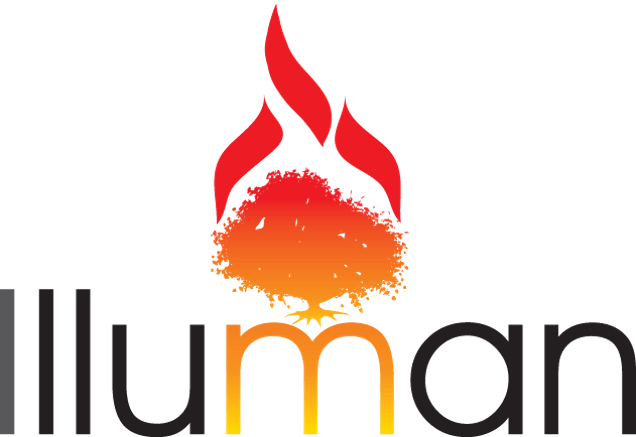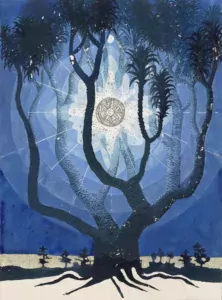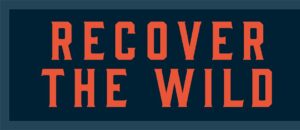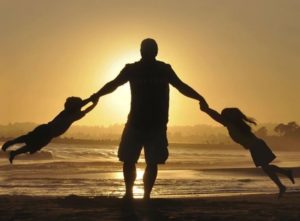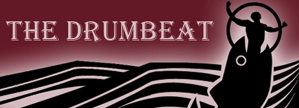Thirteen years ago, our seven-week-old Siamese kitten dealt with fear the first time she met our 80-pound yellow Labrador retriever. She ran away as fast as she could for about three seconds, then stopped, turned around, and went straight back and looked him in the face. The poor dog did not know what to do, so he turned his head and slowly walked away. That memory brings a smile to my face because my amazing little companion is lying alongside me as I write.
I think emotional fear, the kind that wells up inside us, is a lot like Milo our yellow lab. When faced by calm presence and courage, it gets uncomfortable, bored, and leaves.
My earliest memories of fear are from my childhood. Shortly after going to bed I would wake up in a panic because fish were swimming under my bed. My bed and I seemed to be floating in a shallow sea. I was safe as long as I did not get out of bed. My parents would come and turn on the lights to show me that there was nothing to be afraid of. Of course after mom and dad left, the fish would return.
Eckhart Tolle, in his book The Power of Now, says we need to develop an inner observer or inner witness that can be present to our emotions, such as fear. Once we are aware of our fear, if we observe it, hold it without judgement, name it for what it is, and even welcome it, the fear lessens and its power over us is weakened. My little kitten taught me that 13 years ago. Soon she and Milo became close friends.
There is so much scary stuff in the world to be afraid of and yet 2000 years ago someone I admire deeply said “Be not afraid.” So there must be a way to nip our emotional fear in the bud.
Meditation and contemplation have helped me realize how many memories I have floating in my head that lead to anxieties in my body. Once I realize they are there, I hold them lovingly by observing them without judgement, and the anxiety gradually melts away or is transformed into something un-threatening and even useful.
My approach now is to be with fear—to feel it in my body, observe it without judgement (not feeding it with more energy), and it lessens its grip and leaves. For this approach to work though, I have to be aware that it is happening and I have to not fight it or it becomes more powerful. When I live in fear and resist facing it, it has power over me.
Barbara Brown Taylor in her book Learning to Walk in the Dark also taught me about facing fear. She encourages people to walk in the dark without turning on a flashlight. I recall my heart thumping in my chest the first time I did it in the woods on a dark night. It was as if I were a child again facing my fear. It was exhilarating. [amazon asin=0062024353&template=image&title=-&image=-]
When I go camping now, especially in rustic campgrounds where there are no trail lights, I love to walk in the dark. Usually the stars overhead show the way because the trees lining the trail block the stars on each side of the path to reveal the way. As long as I walk under the stars, I’m assured of staying on the path. My night walks become most interesting when there is no moon and the trees’ canopy overhead blocks the stars. It is in these moments that I find most challenging and yet most helpful to face fear. When it arises, I feel it and allow it to be with me. If it is an unreasonable fear such as of a little rustling on the ground nearby, it quickly recedes and is gone. With a growing sense of trust, I am able to take another step.
There is another kind of fear that I have spent a lifetime resolving, fear of being noticed by others. I’m an Enneagram type 9. Nines are experts at staying low and not getting noticed. I suppose it is fear of being judged, fear of being wrong, or fear of being viewed as unworthy, undeserving, or unqualified somehow. It can contribute to performance anxiety.
Marianne Williamson says our deepest fear is not of being inadequate, but a fear of being successful. If true, this would be the ultimate catch 22. If we are successful with something that previously made us nervous, people may expect us to do it again. She continues, “Our deepest fear is that we are powerful beyond measure. It is our light, not our darkness that most frightens us … We were born to make manifest the glory of God that is within us … As we are liberated from our own fear, our presence automatically liberates others.” ― Marianne Williamson, [amazon asin=0060927488&template=image&title=-&image=-]
The last kind of fear that I want to reflect on is life-threatening fear. Gerald May speaks of this type of fear in his book The Wisdom of Wilderness. He writes about an encounter with a large bear that came into his camp in the middle of night growling and sniffing just inches outside his very thin canvas tent:
“I lie, not moving for a very long time after the bear leaves, my senses completely alert, seeing nothing, hearing only my heart and breath and the sounds of the night. For the first time in my life, I am experiencing pure fear. I am completely present in it, in a place beyond all coping because there is nothing to do. I have never experienced such clean, unadulterated purity of emotions. This fear is naked. It consists, in these slowly passing moments, of my heart pounding, my breath rushing yet fully silent, my body ready for anything, my mind absolutely empty, open waiting. I am fear. It is beautiful.”
After the bear left, he cautiously left the tent and went to lean on the closest tree. As he unzipped his pants and started to relieve himself, he looked up into the night sky with its thousands of stars. He immediately was overwhelmed with such a powerful sense of gratitude that he staggered and had to hold onto the tree, not out of concern that he would fall down but for fear he would float away, so swept away was he in gratitude, so thankful to be part of this universe and thankful to be fully alive at that moment. Later he went on to say: “Let me welcome fear for the friend that it is, for what it teaches and how it serves. When I feel the hairs on the back of my neck bristling for no reason, when I sense an un-explainable tremulousness, I never again want to deny it or call it neurotic. Instead, I want to welcome it, go into it, see what it is trying to show me.” This Gerald May quote and the one above are from [amazon asin=0061146633&template=image&title=-&image=-], written in the last months of his life.
Fear, in its many forms, is a great teacher. As we experience fear, struggle with it, hold it without judgement and pass through it, we learn from it, maybe even celebrate it, and are forever changed.

